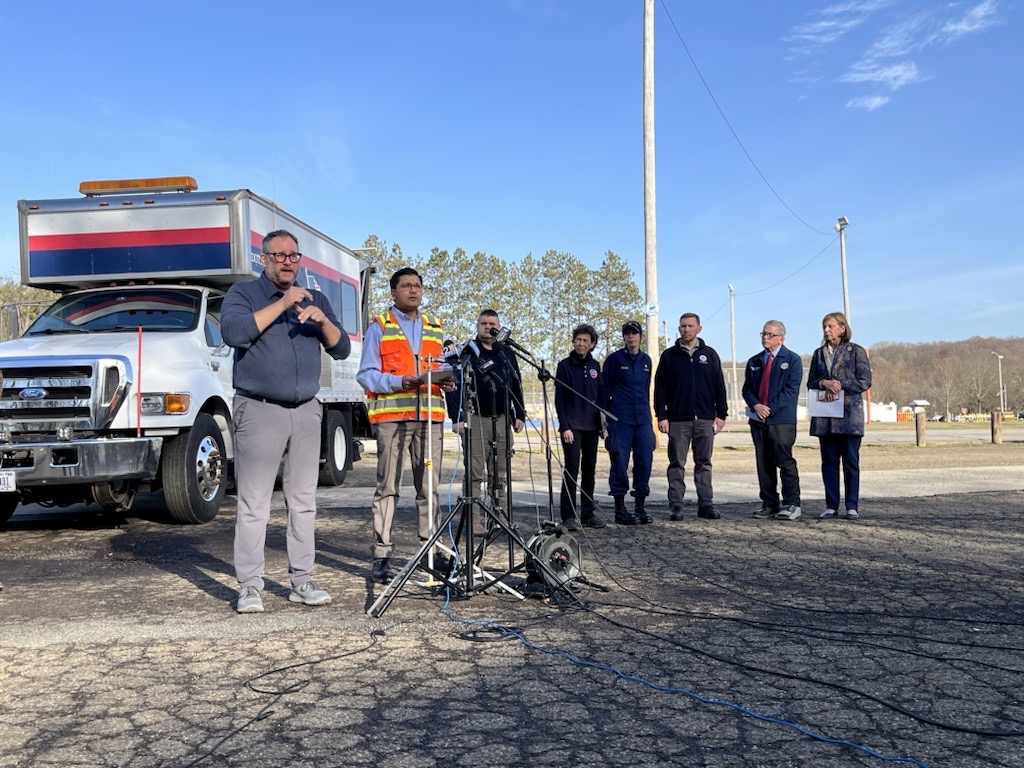
WASHINGTON — The 180-day nationwide safety blitz that the Federal Railroad Administration conducted in the wake of the Feb. 3, 2023, hazardous materials derailment in East Palestine, Ohio, found that railroads’ track, equipment, and processes were generally in compliance with federal regulations.
But the FRA, outlining its findings in a report released last week, did identify shortcomings in the way railroads use data from wayside defect detectors.
“The inconsistencies identified in railroads’ processes and procedures for handling wayside detector data and alerts would benefit from the development of shared best practices related to the inspection and maintenance policies and procedures related to wayside detectors. Similarly, the current lack of detector data information sharing among railroads is preventing individual railroads from identifying trends in equipment condition as equipment is interchanged between railroads. This lack of information sharing may lead to defective equipment continuing in transportation until catastrophic failure,” the FRA report said.
The National Transportation Safety Board investigation into the East Palestine derailment is focusing on the catastrophic failure of a wheel bearing on a covered hopper car. Three Norfolk Southern hot box detectors recorded increasing bearing temperatures on the car but the temperature readings never reached the critical threshold that would have tripped an alarm and required the crew to stop the train – until moments before the derailment, when train 32N passed the East Palestine detector.
Since then, the Class I railroads have adopted common and lower temperature alert thresholds, installed hundreds of additional hot bearing detectors – with more to come this year – and developed an industrywide rule that covers trend analysis of defect detector data.
The report said FRA investigators “found that generally railroads closely monitored the performance of the detector network.”
But the FRA also said its review of high-hazard flammable train routes “highlighted the need for railroads to ensure sufficient resources and infrastructure are in place to effectively process and communicate detector data and alerts to all those involved in the movement of trains (including operating employees as well as dispatch center employees).”
The FRA does not regulate wayside detector systems. The agency’s Railroad Safety Advisory Committee, however, is working with railroads, equipment manufacturers, and labor unions to develop best practices regarding the use, calibration, and maintenance of defect detectors.
The inspection, which ran from March 1 through Aug. 31 and covered more than 2,600 individual wayside detectors on 28 different railroads, found 120 detectors with conditions out of compliance with the railroad’s standards. The conditions included both minor and significant safety critical defects.
FRA said there was a lack of standardization of installation and maintenance practices among railroads and even within individual railroads, as installation and maintenance practices often varied depending on detector types or who within the railroad is responsible for installation and maintenance.
FRA and state inspectors also examined 40,000 freight cars and more than 560 locomotives and found 8,605 defects, a rate it said was consistent with normal inspections. The three most frequently identified mechanical defects were related to safety appliances, freight car air brakes, and freight car safety standards. The defects were often found on outbound trains that had been inspected and deemed ready for departure.
The Automated Track Inspection Program of 76,888 miles of track found nearly 4,000 track geometry exceptions, which was 6% below the prior year’s rate and was an overall reduction of 32% over the past decade. Railroads typically inspected and repaired the defects on the same day they received notification from the FRA.
The inspection also found that tank car owners are on schedule to meet a mandated replacement or conversion of DOT-111 cars by the May 2029 deadline.
The report, High-Hazard Flammable Train Route Assessment & Legacy Tank Car Focused Inspections, is available online. After the East Palestine derailment, Transportation Secretary Pete Buttigieg ordered FRA to conduct a focused inspection of routes that carry hazardous materials, along with a focused inspection of DOT-111 tank cars.














FRA has no one to blame but themselves. Detectors have been around for decades & the Feds have zero regulations on them –and they’re the ones that are supposed to regulate safety.
That’s the proverbial “Fox guarding the henhouse.” The FAA is a similar scenario.